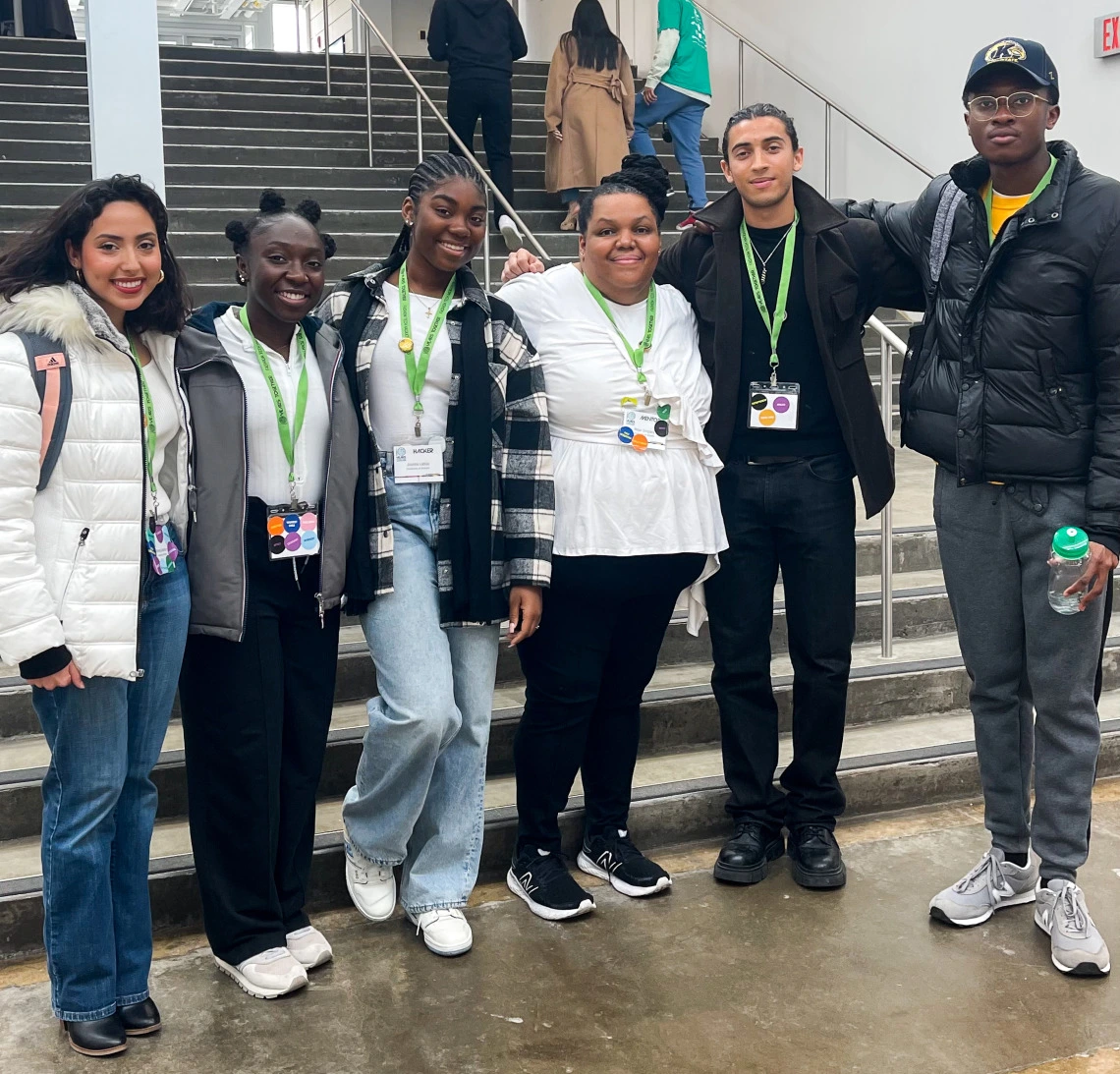Fashion students compete and win at annual fashion tech competition
Four University of Arizona students from the Fashion Industry’s Science and Technology program competed in the 10th annual Kent State Hackathon where they spent 36 hours developing a project that explores the intersection of fashion and technology and won

The Fashion Industry Science and Technology (FITS) program in the Norton School of Human Ecology seeks to provide students with engaging curriculum and immersive practical experiences to prepare students for careers in all areas of the fashion industry. As new technology continues to emerge, the fashion program places a special emphasis on the importance of digital literacy and innovation for students to stay ahead of the social climate.
In the spirit of fostering innovation and collaboration, Associate Professor of Practice in the FITS program, Hope Simpara, recruited and mentored four UArizona students, Athena Carmona, Joanna Labija, Michelle Kusi, and JP Dahdah, and prepared them to apply their knowledge and skills in a national fashion techonology competition.
On March 17, hundreds of students from across the United States and Canada joined together in Kent, Ohio to compete in the 10th Annual Kent State Hackathon. For years, this conference has drawn fashion and technology lovers alike to participate in a competition to win up to $1000 per category. Winning this competition is no easy feat, as the students are required to network, assemble their teams, and create their projects in less than 36 hours to present their final pitch to the judges.
Students were paired in cross-collaborative teams of 4-5 members each and tasked with various competitive assignments that explored the intersection of fashion and technology.
One FITS student, Athena Carmona, competed in the ‘Wear Your Music Maker’ competition where students were asked to make a wearable garment that could also be used as an instrument. As Carmona and her team prepared their project, they opted to utilize the various equipment available in the fashion maker space, from embroidery machines to digital wearable technology.
Carmona’s team conceptualized the creation of Body Flow Fusion, which would be a revolutionary movement-based music system that uses advanced censors and algorithms to track body movements and translate them into music, creating a truly immersive audio-visual experience.
“I really enjoyed the Hackathon event! It was great being able to have the experience of using the advanced software and understanding the different equipment like the embroidery machine,” Carmona said. “I’m so thankful to have experienced the competition and look forward to the future of our fashion program at the U of A.”
On another team, UArizona students Joanna Labija, Michelle Kusi, and JP Dahdah were assigned to a group with two other students from Kent State University. Their group was tasked with finding a tech-based solution for the ‘Customer Engagement Challenge’.
The team conceptualized an app called My Closet IQ, which would serve as a fully interactive stylist in the palm of your hands. The app would suggest complimentary outfit choices based on your measurements, activities for the day, and unique style choices. Their vision: “Where Style and Technology meet to Elevate your Wardrobe.”
“It was an amazing opportunity to be able to use the maker space at Kent State. Our team naturally gravitated towards the advanced equipment and were able to learn how to use a lot of it,” Labija said. “My favorite machine was the fabric printer, it was impressive to see how quickly the design for our brand could come to life with the proper technology.”
After 36 hours of tireless work, the My Closet IQ team presented their pitch to the panel of judges and won first place in their challenge category.
“I want our fashion students to be innovative and prepared for what is happening in the industry,” said Hope Simpara, associate professor in the Norton School of Human Ecology. “The Hackathon helps prepare students for their future careers by providing the resources and experience that merge fashion and technology.”
Fashion has always adapted to trends, and as the world continues to innovate and adapt to new technology, many up-and-coming professionals will have the opportunity to reshape the fashion industry through prior knowledge of advanced software and equipment like artificial intelligence, virtual and augmented reality, 3D printing, novel fabrics.
"Our fashion program seeks to provide resources and experiences for our students to develop the skills and creativity needed to lead change in the fashion industry. We are extremely excited about the growth in our program,” Laura Scaramella, director of the Norton School of Human Ecology. “We are in the process of expanding our existing Fashion Studio to provide the tools and resources students need to test new ideas and unleash their creativity.”
